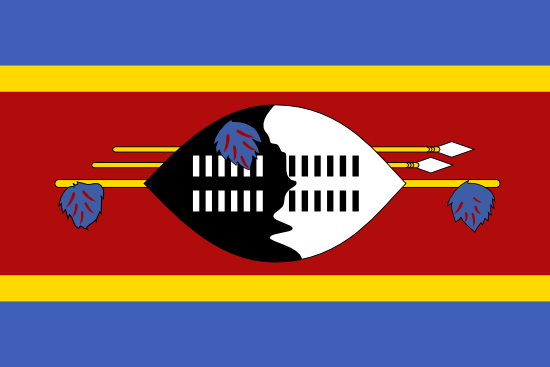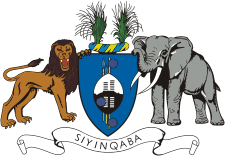Swaziland Overview
Swaziland is located in southern Africa and borders Mozambique and South Africa. The Swazis in southern Africa were guaranteed autonomy by Britain at the end of the 19th century and had the status of a protectorate. In 1968, the country became independent. The Swazis sometimes use the name KaNgwane for their country, which refers to King Ngwane, who was the father of King Mswati I.
| Capital: | Mbabane |
| Biggest city: | Manzini |
| State: | monarchy |
| Language: | siswati, English |
| Religion: | Christianity, indigenous religions |
| Surface: | 17 363 km² |
| Population: | 1.2 million (2013) |
| Population density: | 77 residents per km² |
| Life expectancy: | 48 years |
| Illiteracy: | 18% |
| Currency: | lilangeni (SZL) 1 lilangeni = 0.60 kr |
| GDP per capita: | $ 5,800 (2010) |
| Time difference: | +1 hour |
| Electricity: | 220 V AC, 50Hz |
| National Day: | September 6 |
| Country area code: | 268 |
| 2-Letter country abbreviation: | SZ (See more abbreviations on Abbreviationfinder) |
| Business: | agriculture 60%, industry and services 40% |
| Climate: | temperate, with rainy season from November to March |

The country has the world’s highest number of residents with HIV and AIDS. About 40 percent of the adult population has HIV and of pregnant women, 43 percent are estimated to be infected. Due to the high number of patients, the country has the lowest life expectancy in the world. In Swaziland, life expectancy fell from 60 in 1997 to 31 in 2004.
Swaziland is an absolute monarchy and is one of the oldest in Africa. Mswati III is the king of the country, and when his father died in 1982, Mswati was only 14 years old. For the next four years, the country was ruled first by a female relative and then by Mswati’s mother, as he himself completed his studies in Britain. He has 13 wives and 24 children. Queen is LaMatsebula, with whom he has two sons. According to tradition, he chooses a wife at the so-called Reed Dance ceremony, and then the one who has the most beautiful breasts. Only those who have given birth to a son are counted as “real” wives, the others are considered only as fiancé. As Mswati is known for his wastefulness and polygamy, he is considered by some to be one of Africa’s most corrupt leaders and the continent’s last autocratic leader. His father, Sobhuza II, had 70 wives, 210 children and at the time of his death 1,000 grandchildren.
The annual Umhlanga Festival in Swaziland has become a popular tourist attraction, where foreign visitors can watch the thousands of bare-chested young women dancing in front of the king.
ELECTRICAL OUTLET
Electricity and electrical outlets in Swaziland
Voltage: 230 V
Frequency: 50 Hz
Type of plug: M
Need an adapter: Yes, Swedes need an adapter.
CLIMATE AND WEATHER
Weather in Mbabane
| Climate | Jan | Feb | Mar | Apr | May | Jun | Christmas | Aug | Sep | Oct | Nov | Dec |
| Average temperature °C | 19 | 19 | 18 | 16 | 14 | 10 | 11 | 13 | 14 | 16 | 17 | 18 |
| Day °C | 26 | 26 | 25 | 23 | 22 | 19 | 19 | 21 | 22 | 23 | 24 | 25 |
| Night °C | 12 | 12 | 11 | 8 | 6 | 2 | 2 | 4 | 6 | 8 | 10 | 11 |
| Rain (mm) | 126 | 112 | 92 | 40 | 19 | 19 | 16 | 15 | 33 | 61 | 103 | 91 |
| Rainy days | 15 | 14 | 17 | 22 | 27 | 27 | 25 | 24 | 23 | 18 | 14 | 15 |
| Soltim / day | 4 | 5 | 5 | 6 | 8 | 8 | 8 | 9 | 8 | 6 | 6 | 6 |

Manzini
Manzini is a market town in central Swaziland. It is the country’s largest city, and has 110,000 residents (2010).
Mbabane
According to Countryaah, Mbabane is the capital of Swaziland. The city has about 95,000 residents (2007). It is located in the Mdimba Mountains and is a trading center for the surrounding region. Tin and iron mines are located near the city. Mbabane, like the whole of Swaziland, gets its biggest income from tourism and sugar exports.


